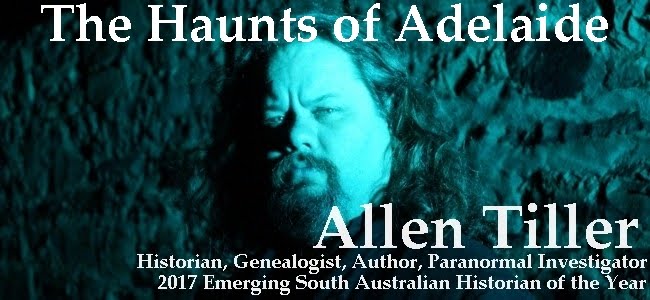Cyril Peter Tiller (1916 – 1946)
Cyril Peter Tiller (1916 – 1946) was born in Mallala, South Australia. His preference was to use his middle name when introducing himself. Peter was the sixth child and the youngest son of William (1877- 1951) and Sophia Tiller (nee Forby – 1880 – 1964).
His brothers and sisters were: Ethel May Tiller (1903–1972), Hurtle George Tiller (1905–1975) Edward Mervyn Tiller (1907–1985), Gladys Catherine Tiller (1910–1993), Dora Rowett Tiller (1913 – 1986), and Thelma Irene Tiller (1918–2003).In the 1830s, Peter moved to Monash, in the South Australian
Riverland where he worked as a nurseryman.[1]
Peter enrolled for with the A.I.F. for World War Two at the
age of 24 on 8 July 1840. He was working as a labourer in Mallala.
Peter was discharged from military service on 12-10 1945 at
the age of 29 years and 8 months. He served in the Middle East (10-4-1941 – 16-
3- 1942) and at New Guinea (19-10 1944 – 20-8-1945). Peter achieved the rank of
Private in the AIF. His War Badge No.: 50965. His Service No. SN SX8696.[2]
After his return from World War Two, Peter moved to
Queensland to work as a nurseryman at Deagon. He met Helen Joyce Kratzmann
(1913 – 1978) who had separated from her husband, Colin Jamieson. Kratzmann
intended to divorce her husband and marry Peter. Peter and Helen had a son
together, Peter George Tiller.
At 6:58pm on February
28, 1946, Peter was hit by a train at Deagon Train Station, Queensland. Francis
Glenwright, a fifteen-year-old, witnessed the train bearing down on Peter, but
failed to warn him, as he was terrified of trains. He admitted during an
inquest in Peter’s death that he saw Peter walking across the pedestrian crossing
but froze with fear when he realised what was about to happen.[3]
Glenwright stated that a train was leaving Deagon Station for Brisbane, and
another was entering Deagon station from Brisbane. He watched the man enter the
pedestrian crossing not realising a second train was bearing down on him. Glenwright
closed his eyes when the train was a foot away from hitting Peter. He admitted
that he had been hit by a train as a 10-year-old, and despite riding trains,
they terrified him.[4]
It was stated during the inquest that the crew of the train were unaware they
had struck a person until they were advised later.[5]
Peters partner, Helen Kratzmann was
interviews, she stated that Peter seemed to be losing his hearing and that many
have contributed to his not seeing the second train. She stated that Peter had
left home that evening to cross the line to the local general store to purchase
some butter.
Police Constable R. A. McNaught, of
the Sandgate police, had the final word stating,
Tiller had been
carried 142 feet. His death was accidental, and no negligence could be attached
to any person. Tiller apparently was watching the train pulling out from Deagon
and did not see the train coming from Brisbane. The inquest was closed.[6]
Peter suffered from
severe head injuries and a mutilated foot after being hit by the train at
Deagon Station on February 28.[7]
Peter died at Brisbane Hospital on 2 March 1946.[8] Peter’s
funeral details were listed in the Courier Mail newspaper as follows,
TILLER, Cyril P.—
The Funeral of Cyril Peter Tiller (Interstate Gardens), Braun St.,
Deagon, will leave the Funeral Chapel, Wickham St., Valley, This (Monday)
Afternoon, at 2 o'clock, for Lutwyche Cemetery. K.
M. SMITH. B2695.[9]
Cyril Peter Tiller is my great uncle. I lived in Queensland in the early
2000’s and visited his grave at Lutwyche cemetery. Peter’s photo is also on
display in the Mallala Museum.
[1] Cyril Peter Tiller, Australian Electoral Rolls, 1903-1980, (1939).
[2] ‘Cyril Peter Tiller.’, National Archives of Australia, (2023), https://recordsearch.naa.gov.au/SearchNRetrieve/Interface/ViewImage.aspx?B=6348467.
[3] 'Too Scared to Warn of Danger', Townsville Daily Bulletin, (10 April 1946), p. 1.
[4] 'Boy Too Scared', Cairns Post, (10 April 1946), p. 5.
[5] 'Too Scared to Give Warning', Morning Bulletin, (10 April 1946), p. 4.
[6] 'Scared-Stiff Boy Unable to Warn', The Telegraph, (9 April 1946), p. 3.
[7] 'Here It Is in Brief', The Courier-Mail, (1 March 1946), p. 3
[8] 'Advertising', The Telegraph, (12 April 1946), p. 8.
[9] 'Family Notices', The Courier-Mail, (4 March 1946), p. 8.


.jpg)


